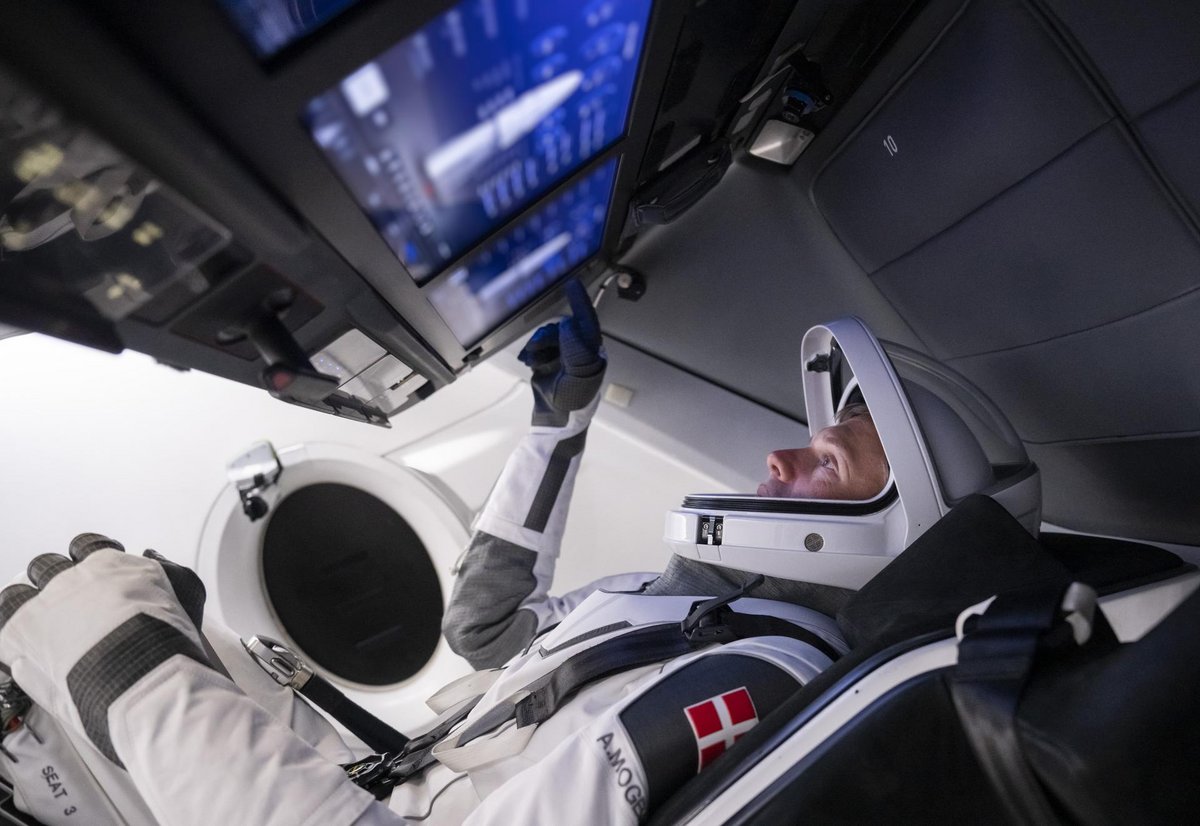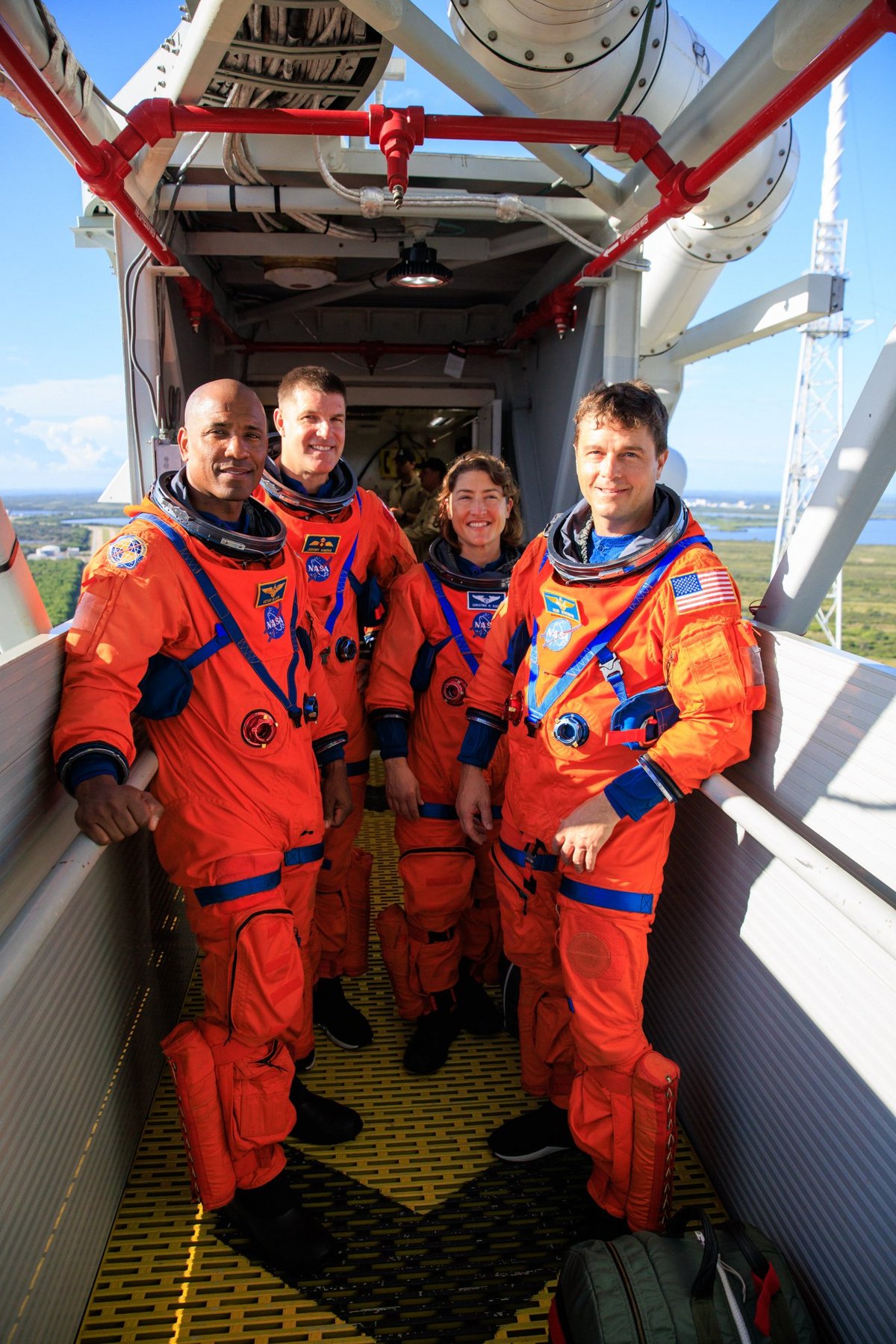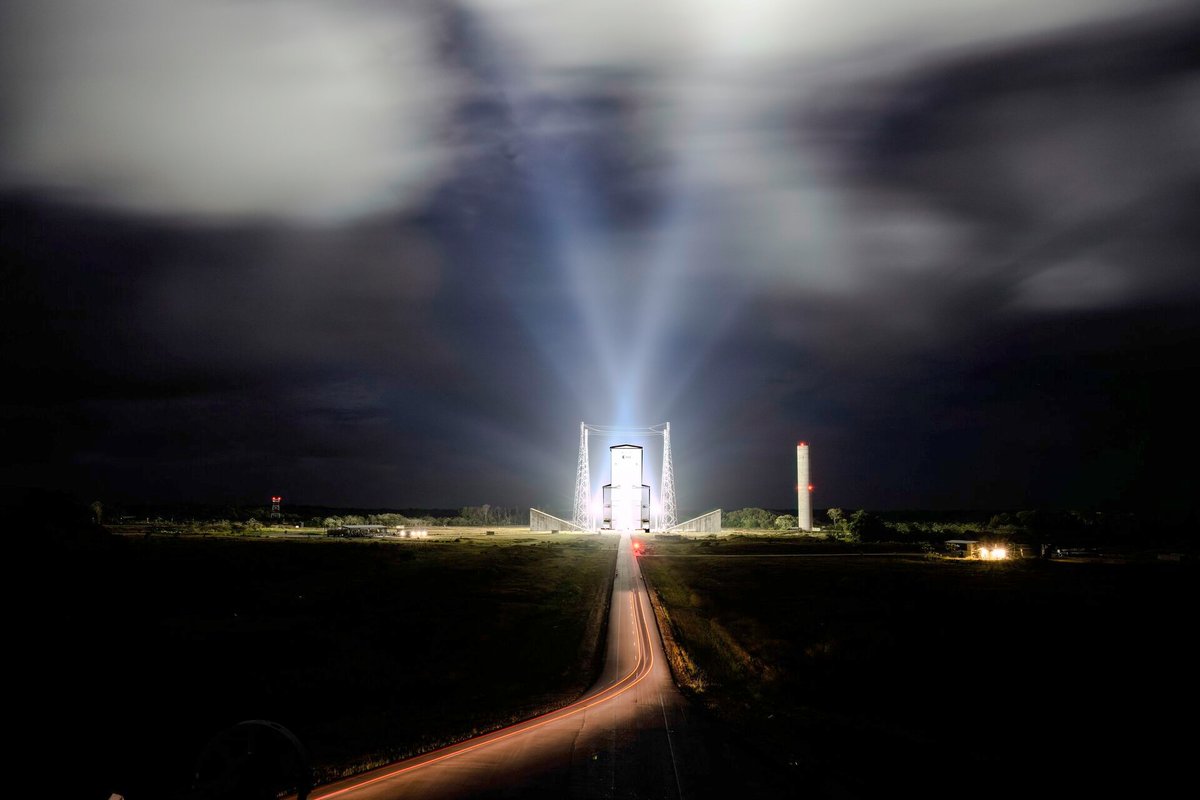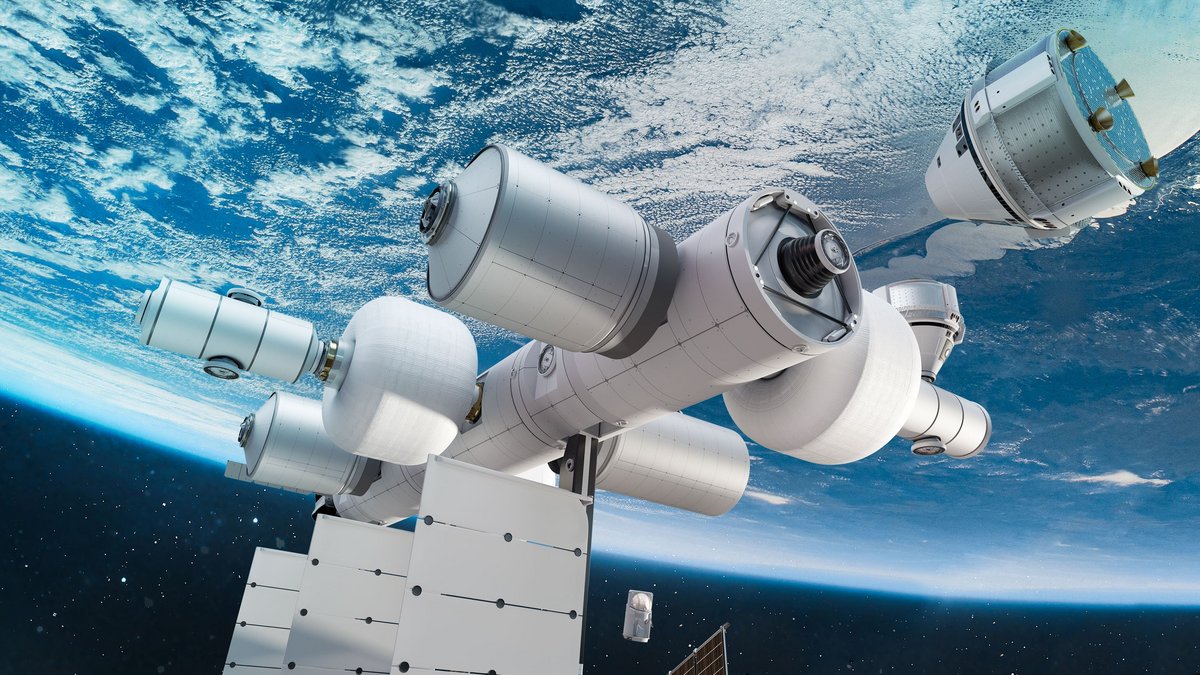The bubbles are barely falling, fireworks are in your eyes, we are in 2024. A space year, without a doubt! This year will be filled with discoveries, new images of the Universe, rocket flames, spectacular successes and equally flamboyant failures. A new year of space exploration.
And to start, happy new year to you! Before we begin this roundup, the same warning every year: Predictions are a dangerous game, a slippery slope toward a world that exists only in guesswork. In 2024, we will have surprises, unexpected mistakes, new promises and incredible new things. Like every year, some of the predictions will not come true. It is therefore not a guide to what you will see, but to what we expect on January 1st, based on the information we have.
2024 should be a great astronautical year. With, first, a few suborbital adventures for the rich customers of the two American rivals, Virgin Galactic and Blue Origin. The next flight of the small rocket plane from Richard Branson’s firm is already scheduled for January 26, even if it is experiencing its last parabolas before its retirement this summer (Virgin is putting its efforts on the next generation). New Shepard should resume takeoffs with passengers, after a successful return to flight at the end of December. To exceed the 3 flights in 2022? There should be always more manned orbital flights too, with first rotations for the orbital stations, the Chinese station (2 crews planned for Shenzhou) and the ISS (2 Soyuz and 2 Crew Dragon). Furthermore, we expect the arrival of one or two new types of cargo ships in 2024, the Japanese HTV-X and the small private DreamChaser shuttle on the American side.
Other manned flights are expected this year. In January in particular, a “tourism” crew will fly to the ISS for a week (Axiom-3 mission), and it is likely that Axiom will attempt another mission before the end of 2024. All eyes are also on the billionaire Jared Isaacson and his Polaris mission with SpaceX, during which the astronauts will attempt an original outing in a private spacesuit. We are still impatiently awaiting the first manned flight of Boeing’s Starliner capsule scheduled for April-May…
And then obviously, the biggest adventure, the Artemis II mission and its tour of the Moon for the end of the year. Even if some recent clues suggest that the 4 astronauts will ultimately only leave by early 2025.

The Moon will remain the church in the middle of the space exploration village in 2024. At least four robotic missions will attempt to land there! There is the small Japanese lander SLIM, which entered lunar orbit a few days ago and which should test a very precise descent, the two American landers from Astrobotic (Peregrine) and Intuitive Machines (IM-1) which will take off in a few days or a few weeks for the first adventures of the USA on Selene soil since 1972!
And, of course, China and its Chang’e-6 mission, which will collect samples from the far side of the Moon, a great first! For it to succeed, China should first send a new lunar satellite in the spring which will have the task of relaying signals to Earth. Finally at the end of the year there could be a new Japanese private mission, with the iSpace team expected to send a new Hakuto lander. The first crashed in spring 2023…
On Mars, the year that begins should be one of transition into the future. On the ground, we wish great adventures to Curiosity (which is going up the Gediz valley) and to Perseverance (which will come out of the Jezero crater), but also to the small helicopter Ingenuity. His teams will in fact continue to send him on reconnaissance as long as he can fly!
We are awaiting new research results, and especially clarifications for future missions to the Red Planet. If all goes ideally, NASA and Blue Origin will send the two small ESCAPADE probes to Mars before the end of the year, to continue the study of its disintegrating atmosphere. Finally, in 2024 we expect optimistic news from the “cursed” European mission, ExoMars and its rover!


In 2024, on the other hand, we should still be talking a lot about Jupiter. Because the Juno probe, currently on site, flies over the volcano moon Io with absolutely new images (and measurement results under study). Because the European probe JUICE, which took off last year, will carry out a very original double Earth-Moon gravitational assistance maneuver in August 2024, and then because NASA will send its mission to study the frozen moon, Europa Clipper , next fall! A real festival. We also hope in 2024 for new images of the preparation of the Dragonfly drone mission to Titan, and who knows, news of a possible Chinese or American mission aimed at the two great forgotten ones, Uranus and Neptune?
The study of asteroids will be a little behind in 2024. Of course, the ESA intends to send the Hera probe before the end of the year to inspect the Didymos-Dimorphos asteroid pair (the one that the DART probe had struck in 2022), but there should be no new visit this year: the Psyche and Lucy probes are in transit, just like Hayabusa2 and OSIRIS-APEX. Only one probe is expected to fly over Venus this year, NASA’s Parker solar mission (November 6), which will take the opportunity at the end of the year to set new absolute speed records.
And for Mercury, the European-Japanese BepiColombo mission will continue to align its trajectory with the planet closest to the Sun with a 4th flyby planned for September. The Sun itself will be carefully scrutinized: we are slowly reaching the peak of activity of its cycle, which represents a little more danger for our satellites and our services, and a little more opportunity to observe spectacular aurora borealis .
We bet that everyone should find their way there. And if by chance it is impossible for us to see any, we can always console ourselves with the images of the Hubble telescopes (which still works bravely), James Webb (it exceeds all expectations) and Euclid, which will clean our pupils !


Speaking of satellites, 2024 should represent a continuation of last year. With first of all Starlink units (SpaceX) for the connectivity constellation of the same name… As if it were raining.
Amazon should also send several batches of satellites from its Kuiper constellation, while Chinese projects will arrive in orbit at a higher rate… And not just to provide internet! The Chinese constellation that received the most satellites last year is called Tianmu-1, and these are weather satellites. Optical and radar satellites to better see human activities (but also icebergs and other natural formations), hyperspectral and gas detectors to detail the impact on climate change, there should be many new platforms this year. Without forgetting the improvement of positioning with GPS satellites (at least 1 or 2), Galileo (normally 4), Glonass and Beidou.
On the satellite side, Europe will still have just as much difficulty sending its own from European soil. As a result, several units are “blocked”, such as the Sentinel 1C and 1D radars, the upcoming Sentinel 2, meteorological satellites like MetOp-SG or important observatories like Biomass. For what ? Because the launcher crisis continues. It will be partially resolved if ArianeGroup, ESA and CNES finally succeed in putting Ariane 6 into service this year. The launch is currently scheduled for mid-June, and all eyes will be on the new rocket, hoping it makes it through its final test all the way to orbit.
And that’s not all, we will also have to find an answer to the equation on the side of the smallest launchers, whether it is the Vega and Vega C duo, the highly anticipated first launchers of the European NewSpace (FRG, ISAR Aerospace, Latitude, Orbex, Skyrora, PLD Space, etc.) or prototypes of future reusable stages. This year, we must deliver!


Indeed, international competition does not wait. With its Starlink launches, SpaceX should exceed the mark of 100 takeoffs for a single company in 2024 (and potentially up to 120), knowing that if the connectivity network is really profitable, there is not really any advantages for the Californian firm in choosing to prioritize other clients! We are also expecting a big show with the Starship program, which is entering a crucial year: we must move forward quickly on technology to convince investors, but also and above all the American space agency, which has placed its trust in the giant of space founded by Elon Musk for the future of his lunar program. All while making progress on reuse.
SpaceX is not the only firm with its foot on the accelerator. Rocket Lab and Firefly both hope to break records, United Launch Alliance should get back on track with its new Vulcan launcher, it will take off in all directions… In the United States as in China! The country should exceed 70 takeoffs in 2024, in a mix that is still astonishing between launchers from the end of the 1980s and other brand new ones from start-ups supported by the tech sector and banks. India will not be left out (we will carefully observe the progress on their Gaganyaan manned capsule) and even Russia is planning some new developments with the Angara rocket. Around the world, perhaps between 220 and 250 orbital shots in a year!


The year will be punctuated by the flames of takeoffs, the explosions and press releases from those who missed their shot, the beautiful materials that will leave for the Moon and the last images before landing, recovering a rocket or crashing. Kerbal Space Program 2 didn’t live up to fans’ expectations, so 2024 will have to take care of that in real life. All you have to do is fasten your seat belts! 5, 4, 3, 2, 1…

2